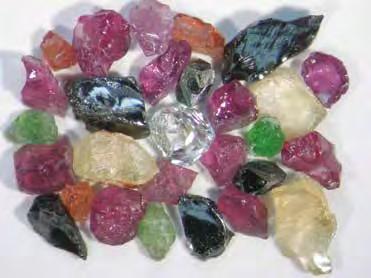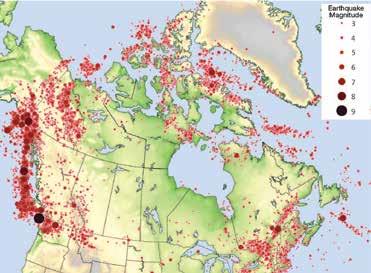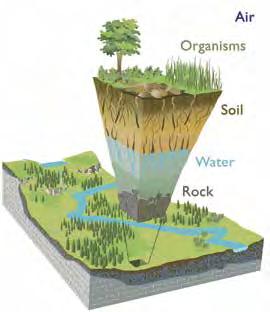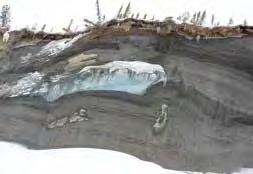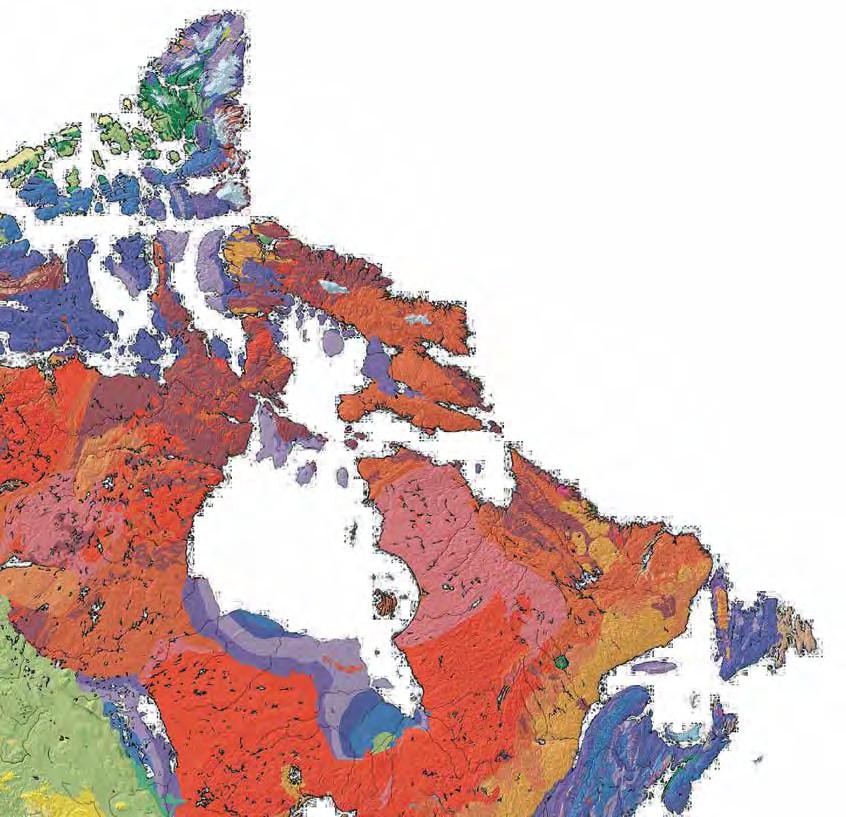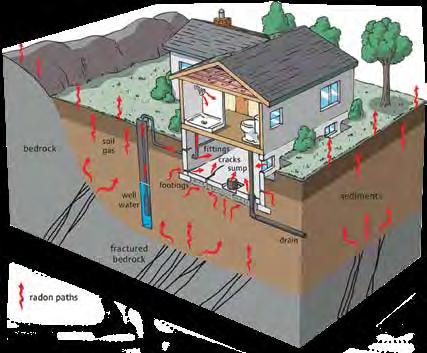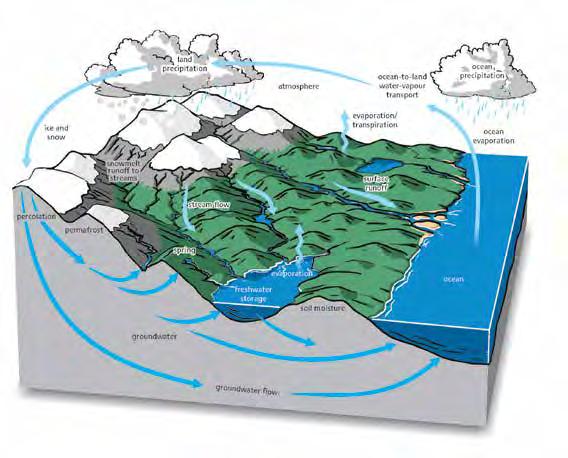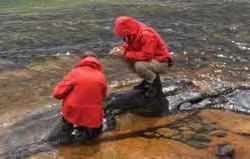
4 minute read
Geoscience and mineral resources
GEOSCIENCE AND
MINERAL RESOURCES
Canada is recognised as a global leader in mineral exploration and mining. Canadian geoscientists and institutions are known worldwide as experts and innovators when it comes to finding and developing new mineral resources.
DID YOU KNOW
that records of Martin Frobisher’s explorations of the New World in about 1577 refer to gold (now thought to have been iron pyrite) in the area now called Baffin Island? Not long after, Samuel de Champlain’s explorations in 1604 revealed the presence of copper around what is now the Bay of Fundy.
DID YOU KNOW
that Canada is consistently ranked as one of the top mineral exploration destinations in the world?
Canada has a wealth of identified deposits and the potential for new discoveries. It is politically stable and is a world leader in environmental and operating practices. Extensive publicly available geoscience information from government, research agencies, exploration companies, and prospectors is also a contributing factor to its ranking. Canadians use mineral resources in almost every aspect of their daily lives. Mineral deposits are unevenly distributed in the crust and most of the easy-to-access, near-surface mineral and energy deposits around the world have already been found. To keep ahead of growing global demand, geoscientists are knowledgeable and innovative in both exploration and development of mineral resources.
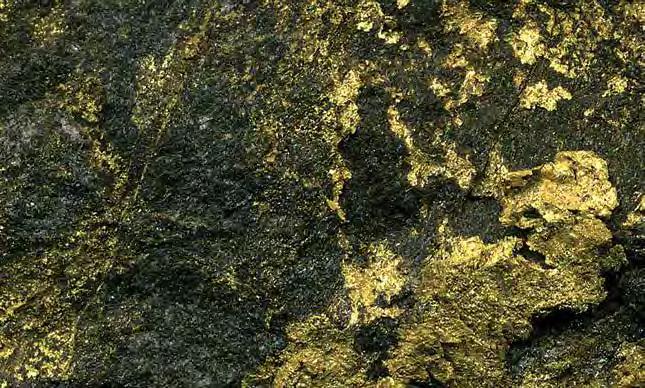
Canada has been endowed with abundant and varied mineral resources because of its complex and long-lived geological evolution and vast landmass. It is one of the world’s largest producers of minerals and metals. Canadian geoscientists have made a significant contribution to the development of the nation through discovery and development of its mineral resources, and today they work around the world on exploration projects, developing and managing mines, and sharing knowledge about mineral exploration and sustainable development.
Estimating the size, composition, and volume of a mineral deposit buried deep below the surface is challenging. Geoscientists are trained to use sophisticated geological, geophysical, and geochemical knowledge and techniques to accurately estimate the amount of valuable metal in the ground. In
H. Falck
Canada, this information is presented to the public in documents that must conform to National Instrument 43-101, which requires that reports be prepared by a ‘qualified person’, who must be a registered Professional Geoscientist. The accuracy and completeness of these reports are critical as investors use them to make financial decisions worth hundreds of millions of dollars.
J. St. John/ Wikimedia Commons
C. Jefferson/FBY INDUSTRIAL MINERALS In contrast to metal commodities (like copper, zinc, or gold), industrial minerals include those rock materials used every day in countless ways in the construction industry and in chemical and manufacturing processes. Examples include aggregate for construction and road-building, building and dimension stone for construction, salt for de-icing, potash for fertiliser, limestone for ceramics and pharmaceuticals, and gypsum for wallboard. Geoscientists identify areas where industrial minerals can be found, evaluate their quality and characteristics, and help identify markets where these materials can be utilised.
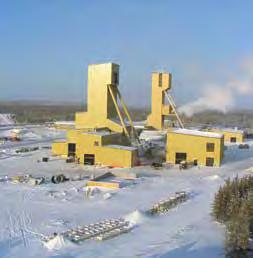
EXPLORER’S TOOLS
Maps and sections: Mapping is a core skill for exploration and mining geologists. Geological maps show the distribution of rock units at the surface, as well as measurements of the orientation of beds and structures. Geologists also map underground in mines, tracing the distribution of orebodies and their associated geological characteristics. A two-dimensional slice of the subsurface between two points on a map is called a cross-section. Today, software can create a three-dimensional model of the rocks in the subsurface from data measured at surface and in drillholes. Geophysics: Geophysicists collect data about the physical properties of rocks and minerals using high-tech tools and equipment, and process the data using mathematical analysis and complex modelling. By measuring properties, such as density and the magnetic, seismic, and conductive responses of rocks, they are able to detect features that may signal hidden resources deep below the surface.
Geochemistry: Traces of elements can be found in a range of earth materials and these may help to find mineral deposits. Geochemists systematically collect soil and rock samples via surface surveys or shallow drilling. They sample stream and lake sediments, water, and vegetation to detect geochemical indications of the presence of a hidden deposit.
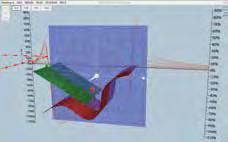
H. Falck Lamontagne Geophysics
MINING IN CANADA4

• In 2016, more than 350 000 people were directly employed in mineral extraction, smelting, fabrication, and manufacturing.
• Mining is the largest private sector employer of
Indigenous people in Canada.
• Mining’s contribution to
Canada’s Gross Domestic
Product (GDP) in 2016 was between 2.7% and 4.5%.
• Mining contributes around 20% to the value of Canadian goods exported each year.
• In 2016, more than half of the world’s publicly listed mining companies (more than 1100 mining and junior exploration companies) were listed on
Canada’s stock exchanges – the Toronto Stock Exchange (TSX) and TSX Venture
Exchange (TSXV).
• The mining industry is the largest customer group in Canada’s transportation sector.
• Tens of billions of dollars were collected from mining companies in taxes and royalties in the last decade.
Overburden Drilling Management Limited Kimberlite indicator minerals (KIM) Certain specific mineral particles in surficial materials can signal the presence of kimberlites - the rock-type that typically hosts diamonds. By mapping the distribution of these KIMs, Canadian prospectors and geoscientists have found many kimberlites, some of which have been developed as diamond mines.
